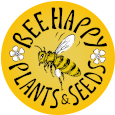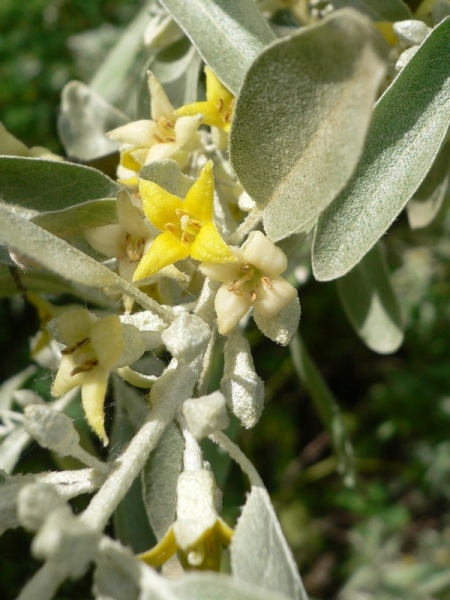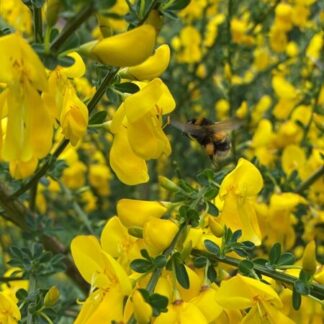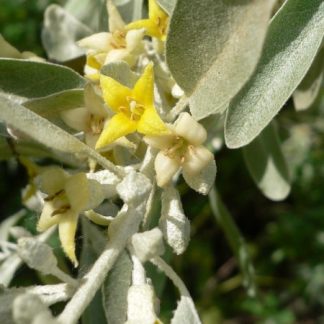Description
Elaeagnaceae (family name)
Forage for pollinators: Produces Nectar and Pollen, for Honeybees which are highly attracted to it in June (the June gap when not much else is available) also attractive to Short and Long-tongued Bumblebees, and can only set fruit when cross-pollinated by bees; in research it was found Honeybees are the only pollinator where this tree is introduced (Chengchen Pan
Cold & Arid Regions Enviroment & Eng., Lanzhou, China)
Flowering time: June.
Growing information: DECIDUOUS TREE or SHRUB growing to 3m (9ft) high by 2m (6ft) in ten years. Prefers well-drained, but can grow in any, even poor soil, tolerating very alkaline (though needs to grow deep), saline soils and maritime exposure. Requires full sun. Hardy to minus 40ºC. Sweetly perfumed yellow flowers appear in June, fruit ripens from September.
An ideal garden or orchard tree which has symbiosis with soil bacteria to produce root nodules capable of fixing atmospheric nitrogen. This feeds not just the host tree but also adjacent plants, and it has been estimated that companion planting Wild Olive in an orchard increases other fruits’ yields by about 10%. Its own fruit is edible raw or cooked and is packed with vitamins A,C,E, flavanoids and essential fatty acids, now being investigated as a food capable of preventing, halting or reversing the growth of cancer.
Can be grown as a hedge (planting 33cm apart), though does not form a dense screen; it is fast growing and tolerates pruning. Benefits from a high-potassium fertilizer in August which encourages green stems to ripen into wood; helping them survive a cold winter. NB. Not a self-fertile tree, meaning you need more than one tree to cross-pollinate and produce fruit.





